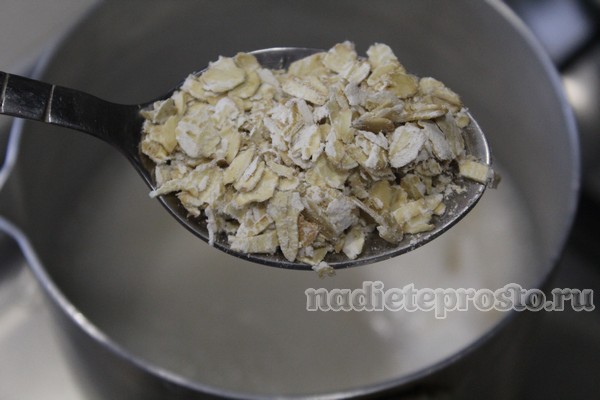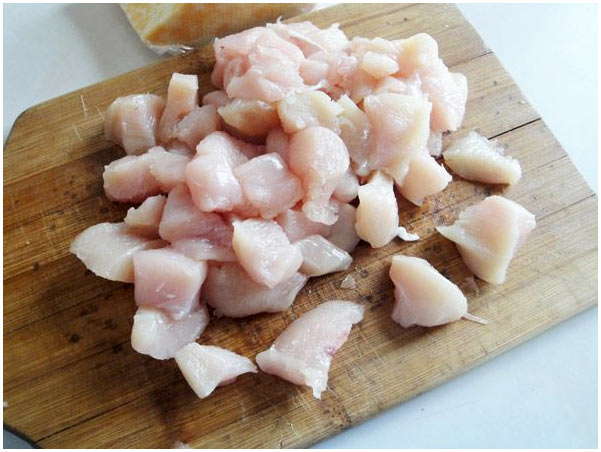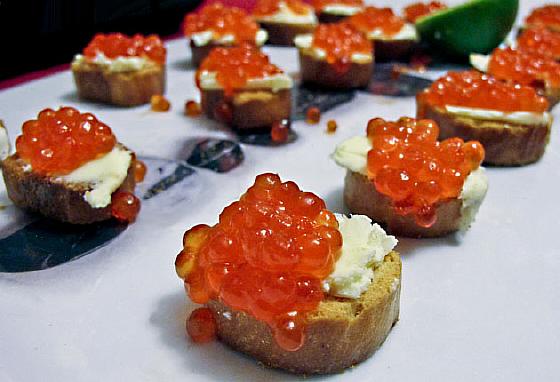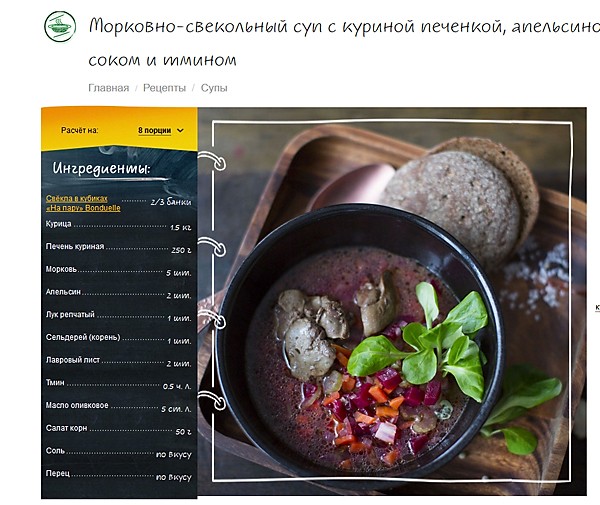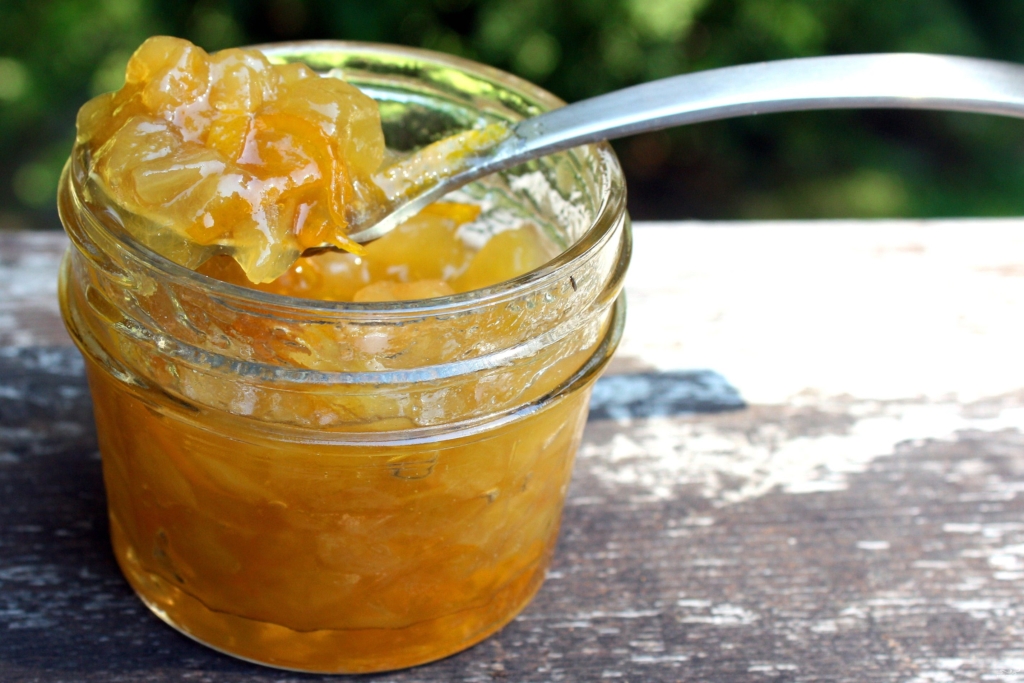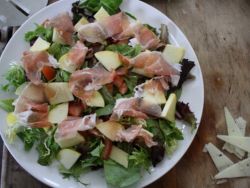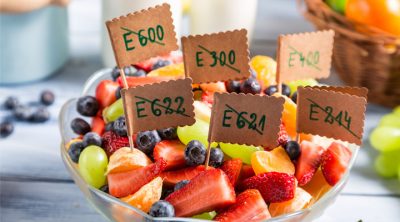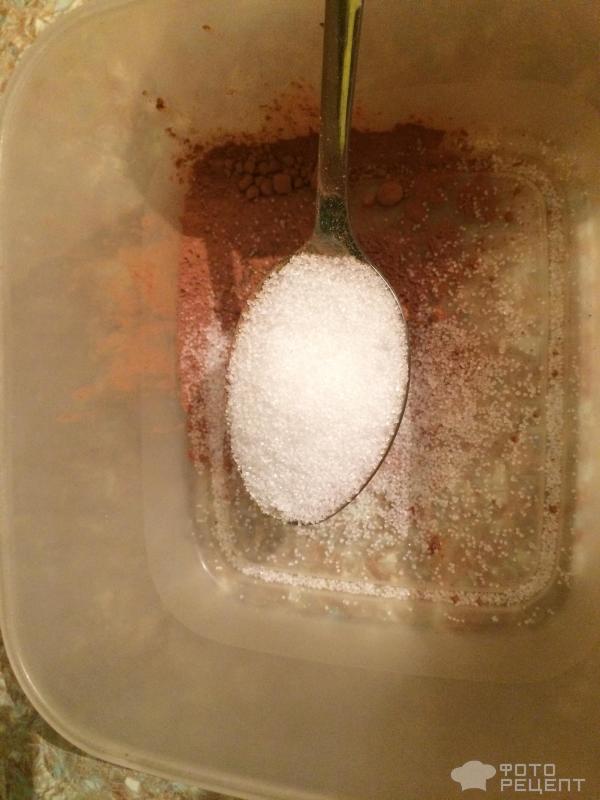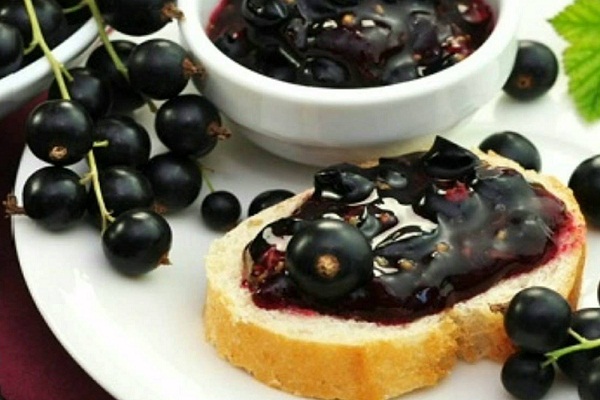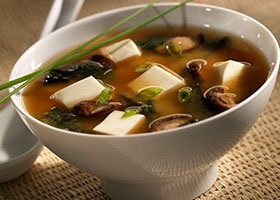Aronia wine with cherry leaves. Homemade wine from black and red mountain ash
Chokeberry (chokeberry) begins to ripen in early September, and the crop can be harvested in about a month - during this time, the nutritional value of the culture only increases. Aronia fruits are considered healing and are widely used for medicinal and culinary purposes. So, from these berries with dark red pulp and a sweet, slightly tart taste, excellent jam, jam, jelly, juice, compote and even wine are obtained. The regular use of such useful preparations helps to lower the pressure, activate the liver and strengthen the immune system. Today we will learn how to make wine from aronia at home - without yeast, with cherry leaves, apples of autumn varieties, from fresh and frozen berries. In our selection you will find simple step-by-step recipes with photos and videos of making homemade wine from black chokeberry of different strengths. Thick and rich, such a drink will decorate the festive table and perfectly complement the taste of your favorite dishes.
Dessert wine from aronia at home - recipe without yeast, with step by step photos

In our latitudes, several varieties of chokeberry are grown, from which excellent dessert and fortified wines are obtained. The technology for making this healthy alcoholic drink at home is extremely simple - even a beginner-winemaker can master the process. Today we will make homemade dessert wine from aronia without the addition of yeast, and for clarity, we offer a recipe with step by step photos. Of course, you will have to be patient, because the fermentation of wine will take at least two months. However, the result is worth it - at the New Year's festive table you can raise a glass of an exquisite ruby \u200b\u200bdrink with a delicate heady aroma. Have a nice tasting!
Essential ingredients for making homemade wine from chokeberry:
- chokeberry - 10 - 12 kg
- sugar - 6 - 7 glasses
- water - 1 l
Step-by-step instruction for a dessert wine from chokeberry without yeast - at home, with a photo:
- To make wine, freshly picked black rowan berries do not need to be washed - otherwise the beneficial bacteria necessary for the digestion process are washed off.

- Pass the prepared chokeberry through a meat grinder or squeeze with your hands - the berries should let the juice go. In the latter case, be careful not to splatter the clothes and walls of the kitchen with stubborn stains.

- Pour sugar into the resulting berry mass - about ½ cup per 1 kg of chopped mountain ash. When adding sugar, you must strictly adhere to the recipe, because an excess of sweet ingredient at this stage can hopelessly spoil the wine. Mix by hand, distributing sugar throughout the mass, and cover the container with a lid. Then we place the future wine in a warm place for fermentation - at a temperature of no more than +25 degrees. We leave the wine container for about a week, not forgetting to stir occasionally.

- After the specified time, the berries of Chokeberry should swell properly and float to the surface. If you put your hand in the berry mass and a foam appears, this will be a signal for the next stage of preparation.

- We select the pulp from the fermented liquid and squeeze it carefully - it is best to do this with your hands. The remaining berry cake is placed in a separate container and for the time being set aside. The wine is passed through a sieve.

- Pour strained chokeberry wine into glass jars - according to our recipe, you will need 2 containers of 5 l.

- Now back to the remaining pulp - we fill it with sugar (1 cup) and pour a liter of cold bottled water. Then you need to mix thoroughly, cover and leave for a week for re-fermentation.

- We close the jars of wine with a water lock, which can be purchased at the store or made with your own hands - from a regular screw cap and an outlet tube. We put the corked banks in a cool dark place.

- The pulp sent for re-fermentation must be passed through a sieve a couple of times.

- Now remove the water locks from the cans and use a spoon to remove the foam from the surface of the drink.

- We add the liquid that was formed after filtering the pulp into the jars, and then close it with a water seal. The bottles are sent to a cool dark place.

- Over the next month, regularly remove the foam, and periodically filter the wine - pour it from one container to another. In addition, once a month you need to pour mountain ash through a thin tube, under which a separate container is placed. This filtration will provide the drink a special unique taste and the absence of impurities.

- To activate the activity of the “necessary” bacteria, we add ammonia to the wine - one drop per liter of the drink. Repeat “injections” every two weeks.

- After a month of fermentation, you need to increase the frequency of filtration - once every 1 to 2 weeks. The procedure will significantly improve the taste of the drink.

- Young wine gets a light shade, and the taste becomes sour. At this stage, you can add sugar - at the rate of a tablespoon per liter. To do this, put the right amount of sugar in a linen bag, which we then pull with a rope and lower it into a jar of wine. We close it with a water seal and wait about a week until the sugar is completely dissolved, after which we remove the bag.

- Pour homemade wine from chokeberry and leave it unclogged for a while - the drink should be completely refilled. Everything, you can start tasting!

How to make wine from chokeberry berries at home - a simple recipe on video
Chokeberry has an extremely positive effect on the functioning of the digestive system, thyroid gland and liver. In addition, due to the content of anthocyanins in its composition, the berries of chokeberry significantly reduce the risk of oncology. Wine and other products from this unique natural raw material fully adopt all its healing properties. How to make wine from chokeberry berries at home? A simple recipe on the video will reveal all the secrets and subtleties of home winemaking - at the exit you will get a healthy alcoholic drink with an unusual taste and aroma.
Homemade chokeberry wine with cherry leaves - recipe, photo

To make wine from chokeberry according to our recipe with a photo, you will need cherry leaves, which give the drink a richness and pronounced taste. For the fortress, vodka can be added to wine from aronia, and with sugar the drink will become sweet and deliciously delicious.
The list of ingredients for a recipe for homemade fortified wine from aronia and cherry leaves:
- chokeberry berries - 100 gr.
- cherry leaves - 100 gr.
- sugar - 800 gr.
- water - 0.8 - 1 l
- vodka - 0.5 l
- citric acid - 2 tsp.
The order of preparation of wine from aronia berries and cherry leaves at home:
- We wash the berries of chokeberry, sorted out and place with cherry leaves in an enameled pan. Fill with water and boil for 10 minutes.
- After boiling add sugar and citric acid and cook over low heat for another 20 minutes. If desired, sugar can be achieved less than indicated in the recipe.
- Cool the berry syrup, filter through a sieve and pour vodka. The resulting drink is bottled and aged for a couple of weeks. Try it for health!
Wine recipe from Aronia berries and apples at home, video
Homemade wine from aronia and apples has an exquisite taste with a slight acidity, and the color is simply mesmerizing - bright and transparent. Prepare at home, according to our video recipe, wine from chokeberries with fresh apples, and you will delight loved ones and guests with a healthy and divinely tasty drink.
How to make wine from aronia and plums at home - according to a simple video recipe
Ripe plums pleasantly soften the "classical" astringency of chokeberry wine, giving a unique delicate taste and aroma. How to make wine from chokeberries with plums at home? We stock up on berries, fruits, patience and - follow a simple video recipe.
How to make chokeberry wine at home? We picked up simple recipes with photos and videos of homemade wine from blackberries - without yeast, with cherry leaves, apples, plums. Following the step-by-step instructions of recipes, you will prepare a tasty and healthy alcoholic drink that will decorate any festive table. Good luck in home winemaking!
Aronia wine has a very rich pleasant taste, has a beautiful burgundy color and can be stored for a long time in a cool place. Chokeberry, which many still call chokeberry, is a very useful berry. Simple and traditional homemade wine recipes.
It contains ascorbic acid, B vitamins, essential for every person elements of copper, iron, manganese and other no less useful substances. Aronia also has pectins and all kinds of sugars. Thanks to this composition, chokeberry is very useful, but, unfortunately, not everyone loves to eat it, since it has a large share of viscosity and astringency. Therefore, most often homemade wine from chokeberry is prepared from these berries.
Unique properties pass from the berries of aronia to the cooked wine, turning it into a medicine with low immunity, high cholesterol, sagging and fragility of the walls of blood vessels, low blood pressure.
A wine recipe from Chokeberry is not at all difficult to prepare. The stages of preparation of this alcoholic drink are almost identical to the preparation of other types of wine: picking berries, getting juice from them, fermenting, filtering and further ripening the finished wine. But still there are certain nuances and subtleties, not knowing which you can get a ready-made drink of dubious taste.
There are as many recipes for making wine from aronia as there are recipes for making other types of wine. We bring to your attention the best simple recipes for making wine from this healthy berry.
The classic simple recipe for chokeberry wine
 Composition:
Composition:
- 5 kilograms of chokeberry berries;
- 50 grams of raisins (unwashed);
- 2 kilograms of sugar;
- 1 liter of boiled water.
Cooking:
Weigh the collected fruits of Chokeberry until the required amount specified in the recipe is obtained, then knead with a wooden jerk or hands until a homogeneous gruel is formed.
Put the obtained aronia puree into a suitable glass or enameled container with a capacity of about 10 liters. To the resulting mass add a kilogram of sugar and add one handful of unwashed raisins. Mix all contents again, cover on top and place for seven days in a warm place.
At the same time, do not forget about the workpiece, since it needs to be stirred from time to time.
After one week, the pulp juice and the juice should finally separate from each other. Gently collect the pulp and squeeze the juice through cheesecloth folded in several layers. The remaining cake from the pulp should not be thrown away, since it is still useful to us. Pour everything from the pulp into a container where wine will ferment. Install a water seal or an ordinary rubber glove on top of the container.
Mix the remaining cake with warm water and add the second half of granulated sugar, mix all the contents, cover on top and place in a warm place for a whole week. Remember to stir the wine daily. After seven days, pour the cake with water and strain it without spinning through any sieve.
Pour the resulting liquid into a container with wine, put on the glove again on top. The painstaking work is that after mixing different liquids, it is necessary to filter the future wine every few days using a rubber hose in a clean container. Then put on the glove again, this process must be repeated until the wine is released from the sediment and the fermentation is completed. After receiving the finished and clean drink, pour it into suitable containers, cork it and place it for ripening for three months in a cool place without sunlight.
Homemade aronia wine a simple recipe with yeast at home
 Composition:
Composition:
- 6 kilograms of mountain ash;
- 2.5 kilograms of sugar;
- 2 liters of water;
- 30 grams of yeast;
Making wine from aronia at home:
Sort aronia and chop with a meat grinder. Squeeze the juice with gauze, as a result you should get about 4 liters of juice. If desired, at this stage, you can add other fruits to the juice, for example, some grapes or autumn apples. You can also add some hibiscus leaves to reduce the effect of chokeberry, which lowers pressure.
Put the juice in the refrigerator for a while, and pour the resulting pulp into half a portion of water, which must be heated to a temperature of +78 degrees. Wait until the water has cooled, after which it must be drained and add another portion of hot water. Wait again, strain with a sieve and mix both infusions with juice. As a result, about 10 liters of finished wort should be obtained, into which yeast can be added.
Before making yeast, add sugar to the must. First you need to add about 1.5 kilograms of sugar and mix all the contents. Then add yeast to the wort and mix everything again. After that, install a rubber glove or a water seal on the container in which the fermentation will take place. Cover the bottle with a thick cloth or place in a dark place.
After about a week, add another serving of sugar to the wine. Given that the wine will ferment for a month, you need to add sugar in three doses. Add a serving of sugar and put on a rubber glove again or install a water seal. Wait 5-7 days again and repeat this procedure. Repeat again after one week and wait until the wine precipitates. Carefully drain the young wine with a straw from the yeast cake.
Place young wine from chokeberry in a cool place for quiet fermentation. Pour it into bottles in suitable containers and seal it not very tight so that the resulting bubbles can be released from it. Drain the drink every two weeks from the precipitate so that it does not pass on the bitter taste of yeast. If desired, add some sugar to taste in the finished wine and you can start using it, since the wine from aronia at home is completely ready.
Aronia wine at home without yeast on vodka simple recipe
Composition:
- 1 kilogram of chokeberry berries;
- 400 grams of granulated sugar;
- 1 liter of vodka or alcohol;
Cooking:
Choosing the right wine recipe from Chokeberry is not difficult. Rinse several times and move the rowan into a three-liter jar. Pour so much vodka so that it covers a layer of berries a few centimeters. Add the required amount of sugar and mix all the contents gently.
Cover the jar on top and place in a warm place for about 50-70 days at room temperature. The entire contents of the jar must be shaken once every few days.
Strain the resulting tincture through several layers of gauze, pour into prepared bottles and carefully seal with lids. The shelf life of chokeberry wine in a cool dark place is almost unlimited. As a result, you should get homemade wine from chokeberry without yeast, which has a pleasant aroma of mountain ash.
Aronia wine a simple recipe
Composition:
- 6 kilograms of chokeberry;
- 1 liter of water;
- 4 cups granulated sugar;
Cooking:

How to make homemade wine from chokeberry at home. According to this recipe, rowan berries do not need to be washed, so you can immediately start chopping them. This can be done using a pusher or use a blender for this. When all the rowan berries are crushed, mix them with three glasses of granulated sugar and mix the entire contents.
Leave the mashed potatoes to place in a warm place for fermentation for about seven days, stirring occasionally. After which there is a spin process, this can be done using the press or do it manually.
Filter the resulting juice with a sieve or use a colander and pour into a glass jar or bottle, close the top with a water lock. Pour one glass of sugar into squeezed berries and pour a liter of water to get extra juice. Again, put in a warm place for one week, not forgetting to periodically stir all the contents.
Filter the prepared juice through cheesecloth or sieve and pour it into the bottle. Leave the container to ferment in a warm, darkened place. After completing the entire fermentation process, pour the prepared alcoholic beverage and store in a cool place.
The season of fruit wines is almost over. It's time to prepare for the classic winemaking, where the main ingredient, as is common in civilized countries, is grapes. But before that, it is necessary to prepare wine from chokeberry, which domestic winemakers characterize as "high quality". It is not difficult to prepare it, and the drink turns out to be very rich, thick and aromatic. True, an amateur.
Aronia, it is aronia aronia (Aronia melanocarpa), and people simply aronia - a plant common in North America, where it has about 15 species. Three grows in our latitudes: arbutus-leaved, slaly-leaved and aronia. Aronia fruits are very useful and widely used in medicine. Apple-shaped fruits with dark red pulp are often used for the preparation of medicinal syrups and vitamin complexes. In addition, chokeberry effectively lowers blood pressure, so it is often recommended for people suffering from hypertension.

The fruits of black chokeberry, including all products made from them, are highly undesirable for people suffering from increased blood coagulation, arterial hypotension and hypotension, gastritis, and peptic ulcers.
Chokeberry is highly regarded by winemakers. The wine from it turns out a thick, extractive, rich ruby \u200b\u200bcolor. The drink is well clarified if the fruits were harvested in mid-September, when they are poured as much as possible juice. Wine from any chokeberry can be used to make any kind of wine, but canteens are rarely prepared, as they are too tart and of a “heavy” taste. It is best to prepare dessert and strong wines. Also, black chokeberry is often mixed with other juices, in particular with the juice of autumn apples, - then the wine is not so tart and more nourishing for the weaker sex.
In general, making wine from chokeberry is no more difficult than any other fruit and berry wine. That is why first check out the recipe for cooking, where the technology is described in more than detail. First you need to get the juice and this is the most difficult. In total, there are three ways to get juice and make wort:
- classic technology;
- pulp dressing;
- cahors technology.
There is no point in describing the classic, as it means using only black chokeberry juice, and the pulp remains out of work (or is used to make jam, jelly or other culinary delights). At the same time, wine from chokeberry according to the classical technology is not very extractive, it contains a minimum of useful substances, and not everyone will like its taste. Therefore, pay attention to two other technologies.
Juice production by pulping
This is a classic technology that is used in most cases. First you need to squeeze the juice from the berries, which then need to be poured right under the neck into a glass container, cork tightly and left in the refrigerator for storage. The pulp, that is, the remaining cake, you need to pour water, add a little sugar and yeast and let it roast for 2-4 days. This can be done in a large enameled pan or bottle, the neck of which can be plugged with a cotton stopper. Mix the pulp a couple of times a day so that it does not mold. After 2-4 days, the mixture should be squeezed out well and mixed with previously squeezed juice. Next, the required amount of sugar is added, and the resulting wort is put on fermentation.
This method is used by experienced winemakers, and wine requires special attention, because the pulp of black choke has the ability to quickly mold, so you need to mix it regularly and on time. After the wort is placed under a water lock, the wine is prepared according to the usual technology for the preparation of fruit wines, which I will describe in detail in the recipe below.
Cahors technology juice production
This method is considered the most suitable for making wine from aronia. Its essence is that after squeezing the juice, the pulp is poured with hot water up to two times and the resulting infusion is mixed with squeezed juice. Thus, all the beneficial nutrients that we need get into the wine. After that, the required amount of sugar and yeast yeast are added to the resulting wort. Everything, the wort is ready for fermentation. This is the method I chose for the preparation of the recipe, as it is ideal for beginner winemakers.
To prepare wine from black chokeberry in a 10-liter bottle, one can be guided by the following proportion: 40% - pure juice of mountain ash, 10-20% - juice of other fruits or berries, the rest is liquid obtained by squeezing the remaining pulp.

Separately, you should pay attention to the addition of sugar to the wort. In order for wine to gain sufficient strength and ferment well, it is better to add sugar in portions. An exception is table wine, in which sugar can be added immediately in full, but I do not recommend preparing table wines from black chokeberry. Therefore, initially we add only 10-15% by weight of the wort volume to the wort, and then we add sugar in equal parts every 5-7 days as soon as the fermentation is weakened. I described this principle of application in more detail in the recipe below.
A simple recipe for chokeberry wine
We pass to the most interesting, namely the recipe. We will be guided by the following table:
Table for the preparation of 10 l of wort for the preparation of 8 l of wine from aronia of medium quality (acidity - 1.0%, sugar content - 5%)

For example, we will prepare dessert wine, but I will make a reservation right away: in theory everything sounds beautiful, but in the process of preparation you will definitely encounter a situation where you have to trust your intuition and make decisions at your own peril and risk. But it will be your experience. Valuable experience.
Juice production, preparation and production of fermentation wort
So, based on the table, we need:
- 9 kg of berries;
- 2.78 l of water;
- 3.70 kg of sugar.
We sort the berries, wash and chop, for example, a meat grinder. Squeeze the juice. It should turn out about 5 liters of juice (here you can increase the number of berries to get exactly 5 liters). You can be guided by the principle described above and use the juice just enough so that it takes 40% of the total volume of the wort. At this stage, you can also add other fruits, for example, take some autumn apples or grapes, which is enough for 0.250 g per 10 liters of wort, that is, to our volume. Also, 50 g of dried hibiscus leaves can be added to the pulp to reduce the effect of chokeberry, which reduces pressure.
We hide the juice in the refrigerator, and pour the pulp, along with apple or grape cake, with half the water specified in the recipe, which must be heated to + 78-84 ° C. We wait until the water has cooled, drain it and add a second portion of hot water. We wait again, filter through a sieve and mix both infusions with juice. You should get about 10 liters of wort, which is already ready for yeast infection.
Kagor technology has one drawback - when heated, very little oxygen remains in the wort, which is necessary for the normal fermentation process. To fix this, the wort can be enriched with oxygen: pour it several times through a colander or shake in parts in a bottle.
Wort infestation with yeast
Before making yeast yeast, sugar must be added to the wort. We need 10-15% of the total volume of the wort, that is, 1-1.5 kg of sugar. First we add 1.5 kg and mix everything well. As a basis for yeast yeast, you can use not washed grapes, raisins, but better strawberries or raspberries. You can also use purchased wine yeast, which is best. It is difficult to make a good sourdough from raisins, so try to get raspberry berries - they will provide the “right”, intense fermentation (you can buy frozen berries in a supermarket and try to make sourdough from it, and if it does not ferment, then just let the berry on, for example, on gin).

Ferment must be prepared in advance, about 3 days before making the wine. You need to take 2 glasses of berries and chop them, then pour them into a bottle, where to add a glass of water and half a glass of sugar. The bottle should be closed with a cotton stopper and put in a warm place for 3-4 days (+ 18-20 о С). After 3-4 days, fermentation should begin - the sourdough is ready. It needs to be filtered and used within 10 days. The resulting sourdough can infect our wort. After that, a water lock is installed on the bottle in which the fermentation will take place. The bottle should be placed in a dark place or covered with a dense cloth. The optimum temperature for the fermentation of wine from aronia is + 20-22 o C.
Rapid fermentation, sugar, wine transfusion and quiet fermentation
After 5-7 days, you need to add a second portion of sugar. Considering that our wine will ferment vigorously for up to 1 month, we will add sugar in three or four doses. Let's dwell on three. Divide the remaining 2.2 kg of sugar into three. Add 730 g of sugar and again under the water seal. Again we wait 5-7 days and repeat the procedure. A week later again. After this, we wait until the wine has completely fermented and precipitate. Carefully, using a straw, we drain the already young wine from the yeast cake. It’s better not to hesitate, otherwise the wine will start to bitter.
Next, the young wine must be put on a quiet fermentation in a cool place. To do this, it must be bottled at the very neck and not too tightly corked so that rare bubbles of carbon dioxide can be released. You can also install a water seal for your peace of mind. To defend young wine from chokeberry is better in the refrigerator or cellar, where the temperature ranges from + 8-10 ° C. Every two weeks, it is better to drain the drink from the sediment, so that it does not pass on to the bitter yeast taste from the sediment (it is better to do this every week).
In principle, the wine is ready and you can drink it, but the degree of readiness is determined by taste. Connoisseurs recommend maintaining it for at least a year - you are unlikely to like the young. Also, if you wish, you can add sugar to taste in the wine, since it was a dessert drink, but the technology I described is best suited for making strong wine. If the drink is bitter, it can be frozen in the freezer - wine from aronia will survive this procedure without visible damage. If for some reason the wine did not work out or you notice signs of souring, fix it with vodka and let it stand - you will get a decent drink (do not forget about the overflow).

As a result, you will get a strong, very aromatic, beautiful ruby-colored wine from aronia, which you heroically prepared at home. Now you know how to do it using Cahors technology. By dressing the wort, it is not much harder to do, so try it. I will be happy to answer all your questions. Good luck with your experiments!
Chokeberry is not only an ornamental plant in the landscape of a garden plot, chokeberry is a very useful plant, it is widely used in folk medicine. Vitamin syrups, compotes and preserves are made from aronia berries, dried for the winter and frozen in the freezer. Among domestic winemakers, the fruits of Chokeberry are also popular, of which they make liquors and tinctures, and black wine is especially tasty. The wine from it turns out a beautiful ruby \u200b\u200bcolor with a pleasant aroma. In some recipes, juice from aronia is mixed with juices of other fruits. A particularly good combination is obtained from apples and aronia. Apple juice reduces the tart taste of rowan berries.
Aronia wine is easy to make at home. A wine recipe is similar to any other fruit and berry wine recipe. The most difficult thing is to get juice from the berries of Chokeberry. You can do this in three ways: 1 - classic squeeze juice; 2- separation of juice by dressing pulp; 3 - obtaining juice using cahors technology. In the first technology, juice is separated from the berries using a juicer and a press, in this case the pulp is not used, and in fact the largest amount of useful substances remains in it. Therefore, to prepare wine at home, they often use either the second or third method.
When to collect chokeberry? The chokeberry ripens at the end of September, the ripe fruits of mountain ash can sag on the branches for another two months, but they can be bitten by birds. Umbrellas are completely cut from the branches, then the berries are separated from the stalks. Aronia is well transported and can be stored for a long time at a temperature of + 3-6 ° C. For drying, it is better to collect berries after the first frost, at which time they have the greatest amount of nutrients and sugar. Before making wine from the berries of aronia, it is necessary to sort the berries, separate the spoiled and moldy fruits. Important rowan berries do not need to be washed, on the surface of the rowan tree there are wild yeast needed for wine fermentation. Throughout the entire process of wine production, cleanliness must be observed; all containers must be cleaned and disinfected.
Step-by-step recipe for wine from aronia juice
 Ingredients:
Ingredients:
- Aronia berries - 10 kg;
- Sugar - 5 kg;
- Unwashed raisins - 100 g;
- Water - 2 l.
Cooking:
- Crush the cleaned berries using a meat grinder, a wooden crusher or simply mash them with your hands. The best result would be to use a special crusher at home.

- Squash the crushed berries in a suitable pot, add 1.5 kg of sugar. The recipe does not use yeast, instead of them raisins are added and, of course, wild berry yeast themselves are involved in the process. Pour raisins and stir everything. Cover the top of the pan with gauze and put in a warm place with a temperature of 20-25 degrees. Every day you need to mix the pulp and heat the foam cap formed on the surface. During this time, the berries will swell, fermentation will begin.

- When the fermentation period expires, it is necessary to squeeze the juice from the pulp. This can be done using a bag of dense fabric, an ordinary polypropylene bag will fit, or using a press. In extreme cases, use a colander. The squeezed juice is drained into the fermentation tank, leaving half of the tank empty, further juice will be added to it, the container can be closed with a water seal, it can be made from a rubber glove, one finger punctured with a needle.

- Pour 2.5 kilograms of sugar into the remaining pulp and add warm water at a temperature of 30 ° C. Stir the contents, cover with gauze and leave for another week, stir the contents periodically once a day.
- After a week, separate the juice from the pulp again and add it to the fermentation tank, where the first batch is already fermenting. Wine should ferment at a temperature of 18-25 ° under a water lock.
- After a week, add another 1 kg of sugar, you need to do this by taking 500 ml of fermenting wine and dissolving sugar in it, then pour the syrup back into the bottle.
- The main fermentation lasts 1-2 months, it all depends on the amount of sugar in the wort, the fermentation temperature and the work of the yeast. At the end of the fermentation, the evolution of carbon dioxide ceases, precipitation falls out, the wine becomes lighter.

- At this time, you need to drain the wine from the sediment (decant) using a thin PVC tube without touching the sediment. Pour the melted young wine from chokeberry into a clean dry bottle to taste and if you need to add sugar, you can also fix the wine with strong alcohol by adding vodka, alcohol or cognac. Install a water lock and place the wine in a cool room with a temperature of 8-15 ° C.
- Quiet fermentation lasts up to 6 months, during this time when sediment is formed, you need to remove wine from it, usually do it once a month.
- Finished wine bottled, well cork and store in the basement. The strength of the wine is 10-12 degrees. Wine made at home from chokeberry can be stored in a cool basement for up to 5 years. The longer the exposure time, the better the taste of the drink becomes.
Video recipe for making wine at home
Homemade Aronia and Apple Wine
Wine according to this recipe will be softer, not as tart as in the first version. It is better clarified and has a richer bouquet in taste. It is not difficult to cook it, even without special experience in winemaking.
Composition:
- Chokeberry - 2 kg;
- Apples - 1 kg;
- Sugar - 3 kg.
- Water - 2 l.
How to do:
- Black rowan berries to crush or chop in a blender.
- Rub the apples, remove the stalks and cut the kernels, chop or pass through a juicer.
- In an enameled bowl, mix applesauce with chokeberry, add water and pour 1 kg of sugar. Cover the neck with gauze and put in a warm place for a week. Stir the mixture daily and heat the hat from the risen meal of apples and mountain ash.
- After 7 days, squeeze the juice from the cake and pour it into the fermentation bottle. Install a water seal on the neck or make it out of the signet.
- After a week of fermentation, add 1 kg of sugar in the form of syrup.
- After another week, repeat the operation and add the rest of the sugar dissolved in the wort of the wine.
- After 2 months, drain the wine from the precipitate and send it to a cool room (cellar or basement) for 3-5 months.
- Finished wine gently decanted from the sediment, pour into beautiful bottles. Wine from black mountain ash with apples is ready!
Blackberry wine drink recipe with cherry leaves
 A simple and quick recipe allows you to make an alcoholic drink more like liquor than wine. In three weeks it will already be possible to taste it.
A simple and quick recipe allows you to make an alcoholic drink more like liquor than wine. In three weeks it will already be possible to taste it.
Ingredients:
- Chokeberry - 0.5 kg;
- cherry leaves - 100 pcs.;
- vodka or cognac - 1.5 l;
- sugar - 200 gr;
- citric acid - 1 tsp
How to make a recipe:
- Rinse the berries of chokeberry, scroll through a meat grinder. Place the mass in a pan, add the leaves of cherry. Add water, heat to a boil and cook over low heat for 15 minutes.
- Strain the broth through a fine sieve, add sugar with citric acid. Stir well until sugar is completely dissolved.
- Cool the mixture to room temperature, pour into a suitable jar add vodka. The drink will turn out much tastier if cognac or brandy is included in the recipe as an alcohol base. Leave the jar in a dark place for insisting for 3 weeks. Filter the finished drink through a cotton-gauze filter into bottles and you can enjoy a pleasant aroma and taste.
The benefits and harms of chokeberry
Aronia berries contain a huge amount of substances that are useful for the human body. This and the mass of vitamins, various acids, sugars and trace elements. Chokeberry brings benefits and helps in the treatment of many diseases: reduces blood pressure and cholesterol. It has a diuretic effect. Normalizes the liver and gall bladder. Wine from chokeberry, in addition to benefit, can cause harm, especially to people with stomach diseases and suffering from hypotension. You can not use it for pregnant and lactating women.
Tasty and fleshy fruits of the ornamental shrub are actively used by culinary specialists, but they have gained the greatest popularity as the basis for creating wine from aronia. The benefits and harms of the drink have long been known to traditional healers. Many years ago it was used as a means to lower blood pressure. Recent studies have shown that this is far from the only property of the product, it can be used for a variety of therapeutic purposes.
The composition and benefits of wine from aronia
Chokeberry and without pre-treatment is a fairly nutritious and healthy product. It contains almost all the vitamins necessary to maintain human health. The berry is also rich in minerals, fiber, and organic acids. The use of the product in therapeutic doses (not more than half a glass per day) allows us to count on such positive results:
- Lowering blood pressure to optimal numbers. Maintaining the active activity of the heart and blood vessels by strengthening and increasing the elasticity of smooth muscles.
- Removing excess cholesterol from the blood, improving the coagulability of the substance.
- Increasing the functionality of the liver and thyroid gland.
- Wine from chokeberry stimulates the elimination of toxins from the body, which allows you to tidy up the digestive system.
- The abundance of antioxidants reduces the likelihood of developing cancer.
- Immunity is strengthened, signs of vitamin deficiency, physical and emotional exhaustion are eliminated.
- The fruits of chokeberry contain pectins, which are able to remove heavy metal salts and radioactive substances from tissues. They are also able to act on the principle of a choleretic agent.

Tip: Open wine from chokeberry should be kept in the refrigerator door, at a temperature of about 10 ° C and humidity within 60-80%. If there is such a possibility, then after each intake it should be poured into a container of a smaller volume so that oxygen does not destroy the beneficial substances in the composition of the drink.
- Chokeberry wine stimulates the production of gastric juice, which can help people with low stomach acidity.
- The drink normalizes the functioning of the nervous system. It improves mood, eliminates the effects of stress, signs of overwork and emotional imbalance.
- The skin condition improves due to the fact that the tissues are saturated with vitamins and moisture. Excess fluid is excreted from the body, which allows you to get rid of edema and cellulite.
- The acceleration of metabolism and the presence in the composition of the drink only natural components provide smooth weight loss. Of course, only subject to the introduction of appropriate changes in the diet.

To get the declared benefits from the fruits, you need to collect them at the peak of the content of valuable substances. The wine will turn out to be thick and full if you make it from the black chokeberry collected in October during the first frosts. It was at this time that the berries acquired a sweetish taste, and their flesh became a bright ruby \u200b\u200bcolor.
Harmful wine from chokeberry
Wine made from chokeberry can be harmful to the body, like all alcoholic drinks. Risks will be minimal if you do not exceed therapeutic doses of the product and treat it precisely as a drug. One glass of drink per day is enough to obtain therapeutic results that are not associated with the likelihood of side effects.

In addition, there are several conditions in which the use of wine from aronia is prohibited in any quantities:
- The presence of alcohol dependence.
- Diabetes. Despite the presence of natural sugars in the wine, the drink can provoke serious fluctuations in blood glucose levels.
- Pregnancy, children's age, period of breastfeeding.
- Tendency to allergies. The product contains many substances that can provoke a violent response of the body.
- Migraine. may increase the severity of symptoms.
- Peptic ulcer and gastritis with high acidity.
- Hypotension. And with hypertension, the daily dose of the product should be agreed with the attending physician.
- Thrombophlebitis and increased blood coagulation, varicose veins.
- Constipation
It is not necessary to introduce wine from aronia into your diet on an ongoing basis. It is better to drink it in courses, for example, in half a glass every other day for 2 weeks. You can repeat the approach after about a month.
Recipe for Aronia Wine
To prepare 6-7 liters of wine from aronia, you need to take 10 kg of ripe fruits and 5-6 glasses of sugar. The active effect of the drink on blood pressure can be reduced by adding 50 g per 10 kg of fruit to the composition (in this case, it will not be dangerous for hypotensive patients).

To obtain a product, you need to perform the following manipulations:
- The washed and dried berries are laid out in a container of glass, stainless steel or enamel. Grind them by hand and mix thoroughly, adding all. Cover the dish with a lid and leave the mass to ferment for 1-2 weeks, stirring regularly.
- The next stage begins after the berries swell and float, and a foam appears on the surface of the mass. Then the thick part must be collected and squeezed out of it all the liquid. We put the cake in a separate bowl, sprinkle with a glass of sugar, pour 1 liter of drinking water and send for re-fermentation. The process should take about 7 days, you need to make sure that mold does not appear on the composition. The strained liquid is bottled in cans with hydraulic locks and stored at a temperature not exceeding 18 ° C.
- After the indicated time, the cake is again decanted and discarded. We open the containers with the first juice, remove the foam from it and mix with the second juice. Again, we close everything with hydraulic locks.
- We insist on mass for a month, regularly removing foam from the surface and filtering the composition. If this is not done, a precipitate will appear in the product, which will spoil the final taste of wine from aronia. Over time, the liquid should become more transparent, which indicates the approach of the moment of its readiness.
- If at some stage the active drilling process fades, you can add 1 drop of ammonia per liter of wine to the billet. This will not allow the fermentation reaction to subside.
- The finished wine will be transparent and quite acidic in taste, so at the very end of the work it needs to be sweetened. To do this, take sugar to taste (about 1 tablespoon per 1 liter), place in a linen bag and dip into a liquid. The structure is completely immersed in the composition, but it should be as close to the surface as possible. We wait a week and throw out the bag.

Aronia wine is bottled and corked leaky. At first it will “play”, due to which excessive pressure will be created on the walls of the dishes. If the containers are securely closed, they may burst.
Rules for choosing finished wine from chokeberry
Aronia wine can be purchased ready-made. To get a high-quality and useful product, you need to pay attention to such moments when choosing it:
- It is better to refuse to buy semisweet grades. For their production, low-quality materials and wastes are usually used, as well as large quantities of preservatives.
- The label must include the manufacturer, the year of harvest and the date of the spill.
- The container must be wooden or glass. A drink in plastic containers and cardboard boxes is only suitable for cooking, but not pure drink.
- After uncorking the bottle, sniff the cork. If it smells of mold or musty, it is better not to drink wine.
It is important to understand that chokeberry wine is primarily a folk remedy for the treatment of various diseases. It is not very suitable as an aperitif or regular drink.


